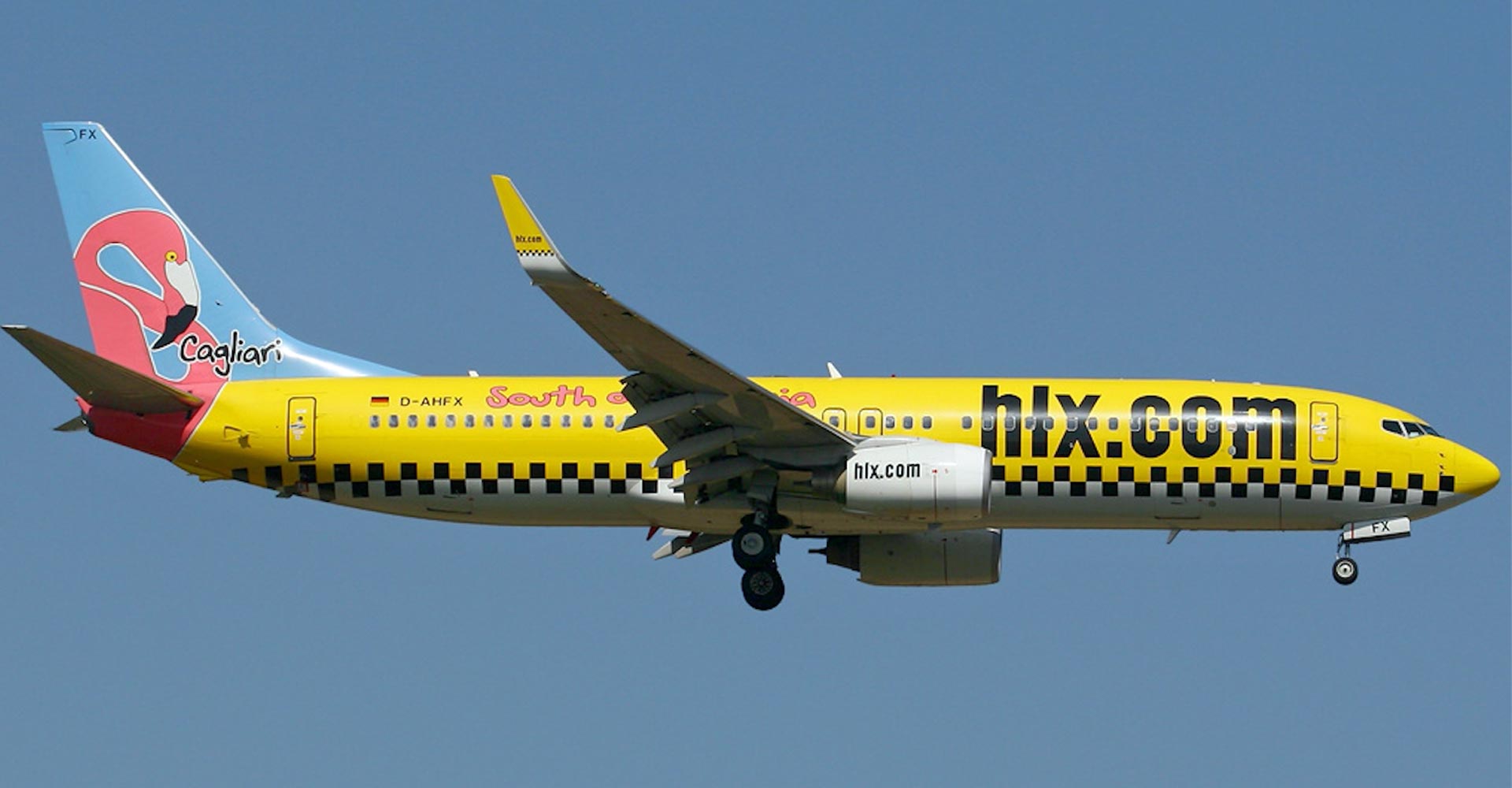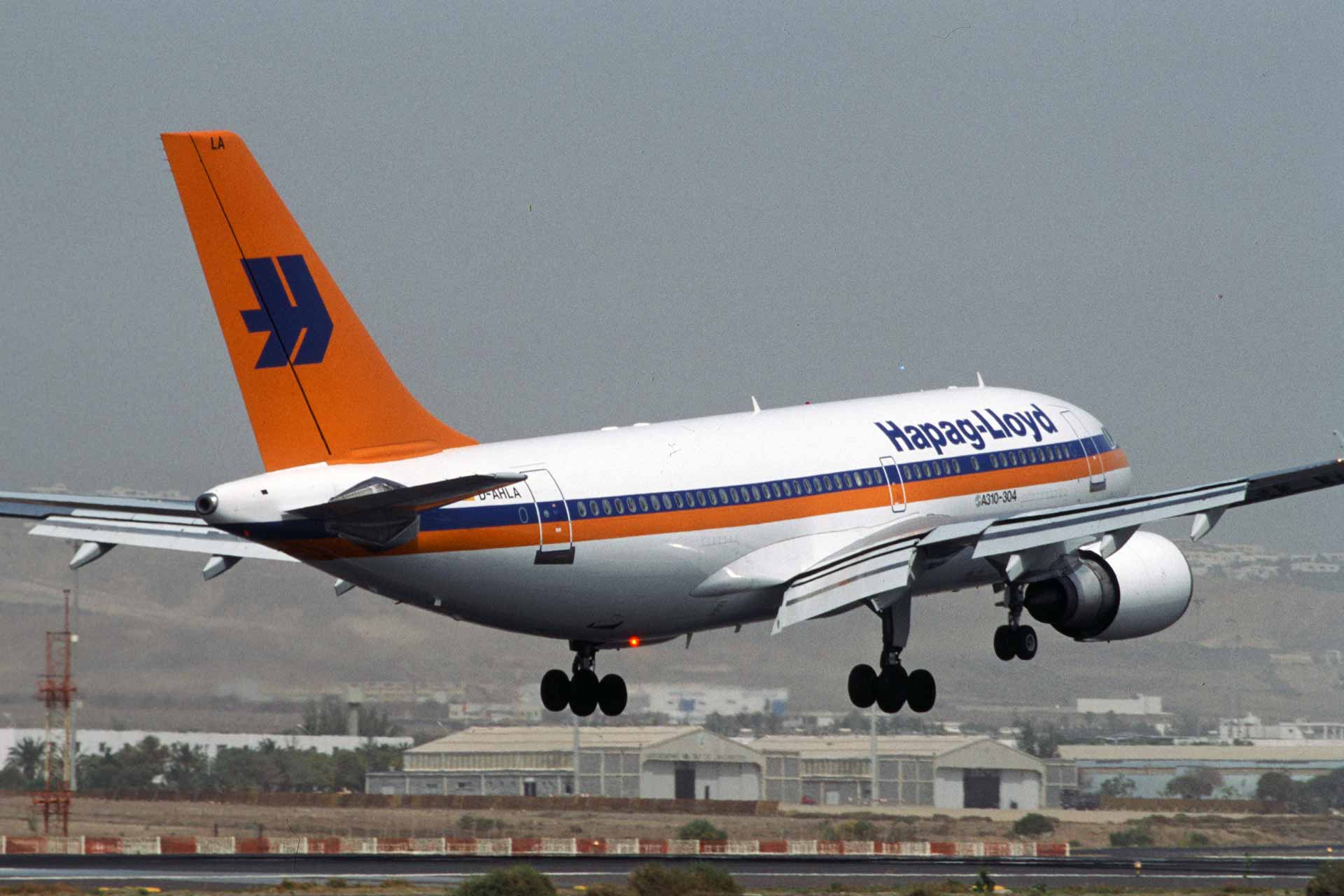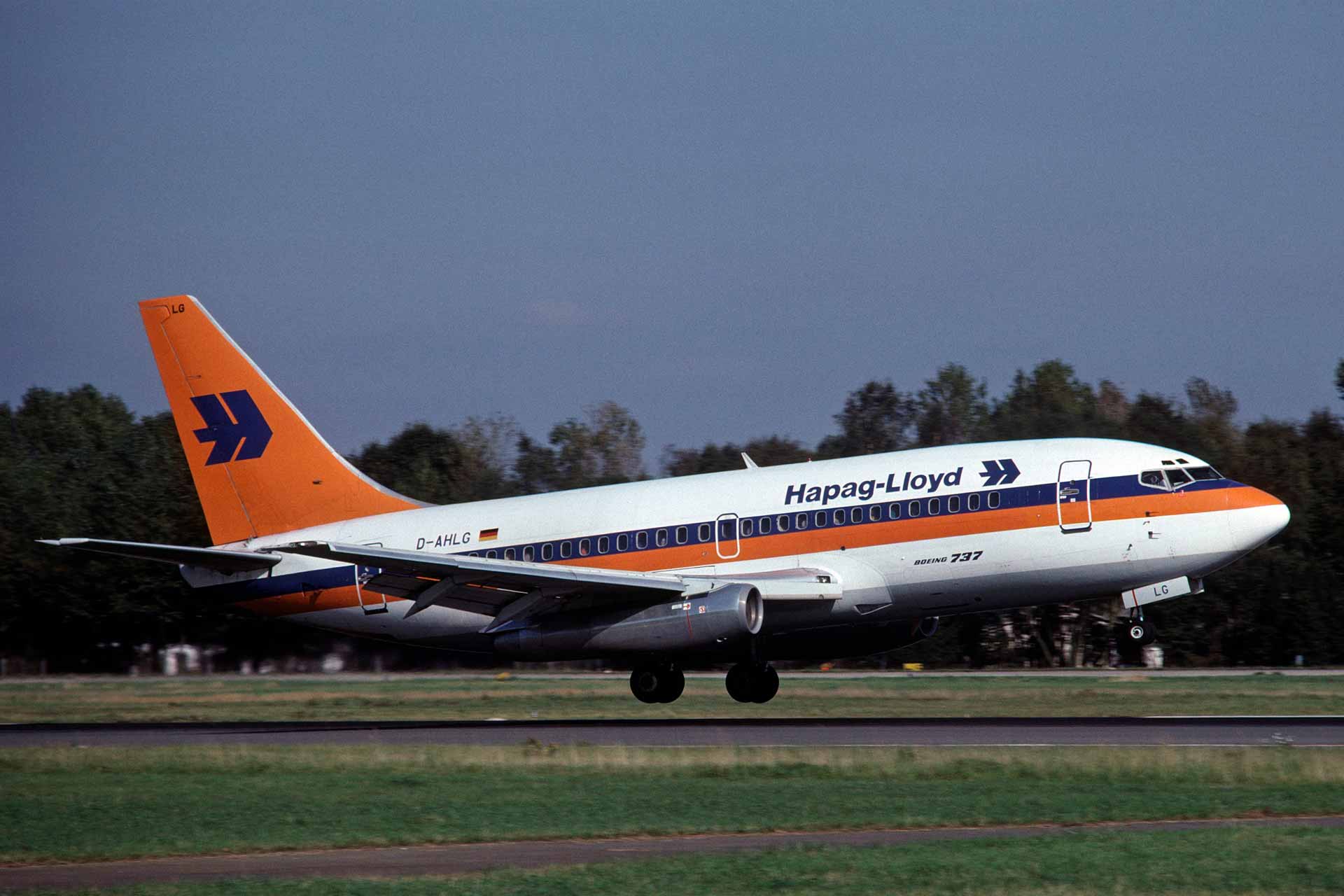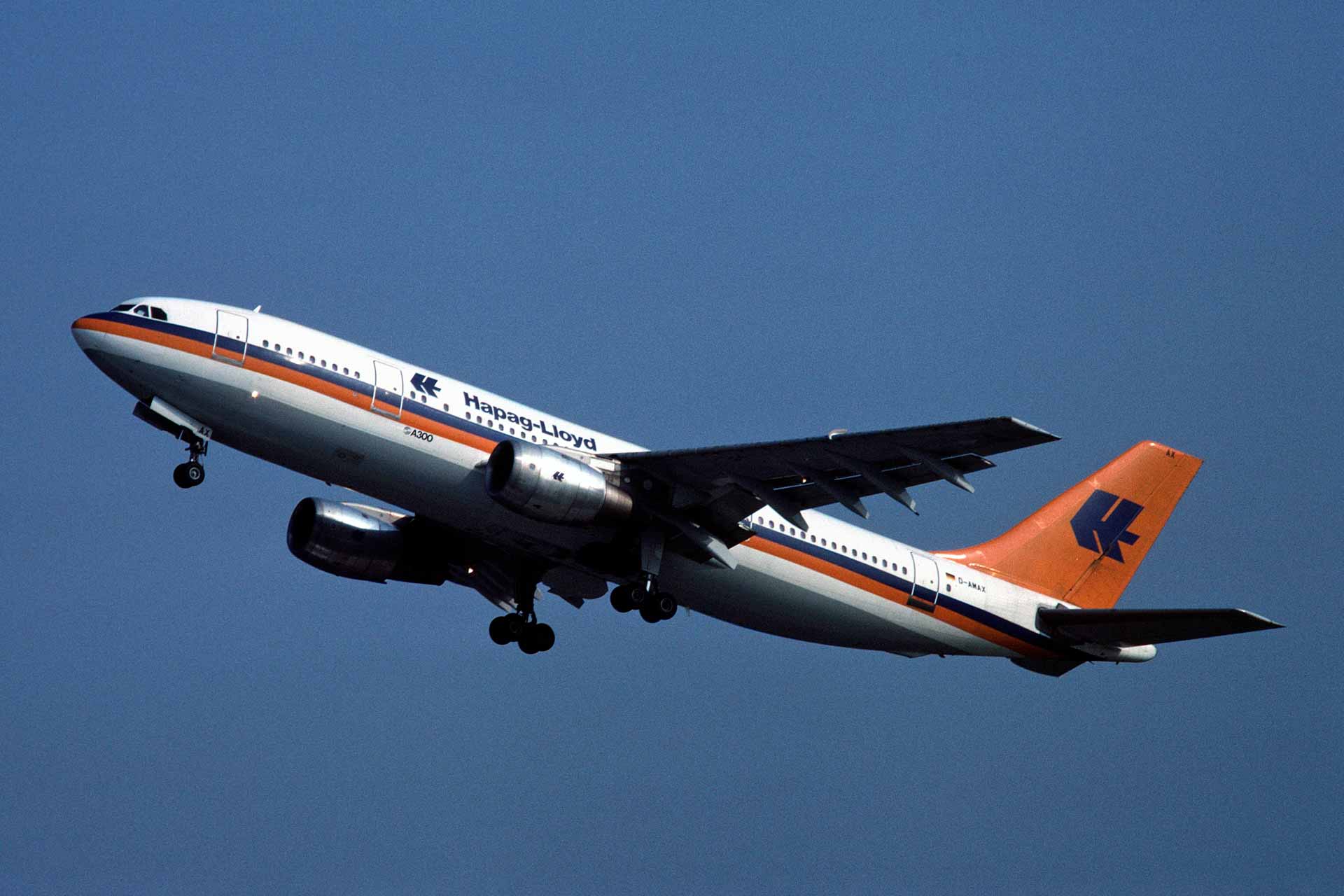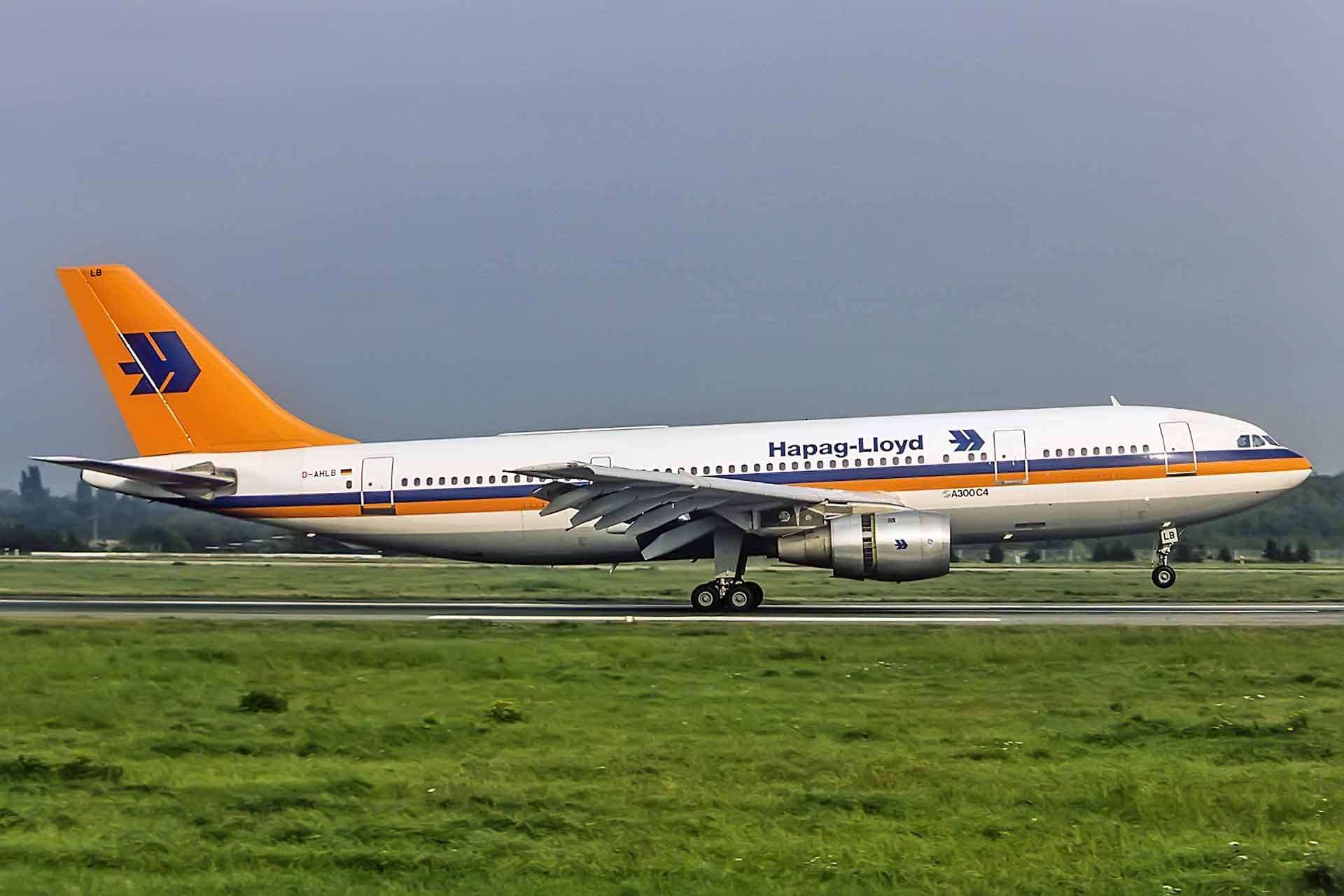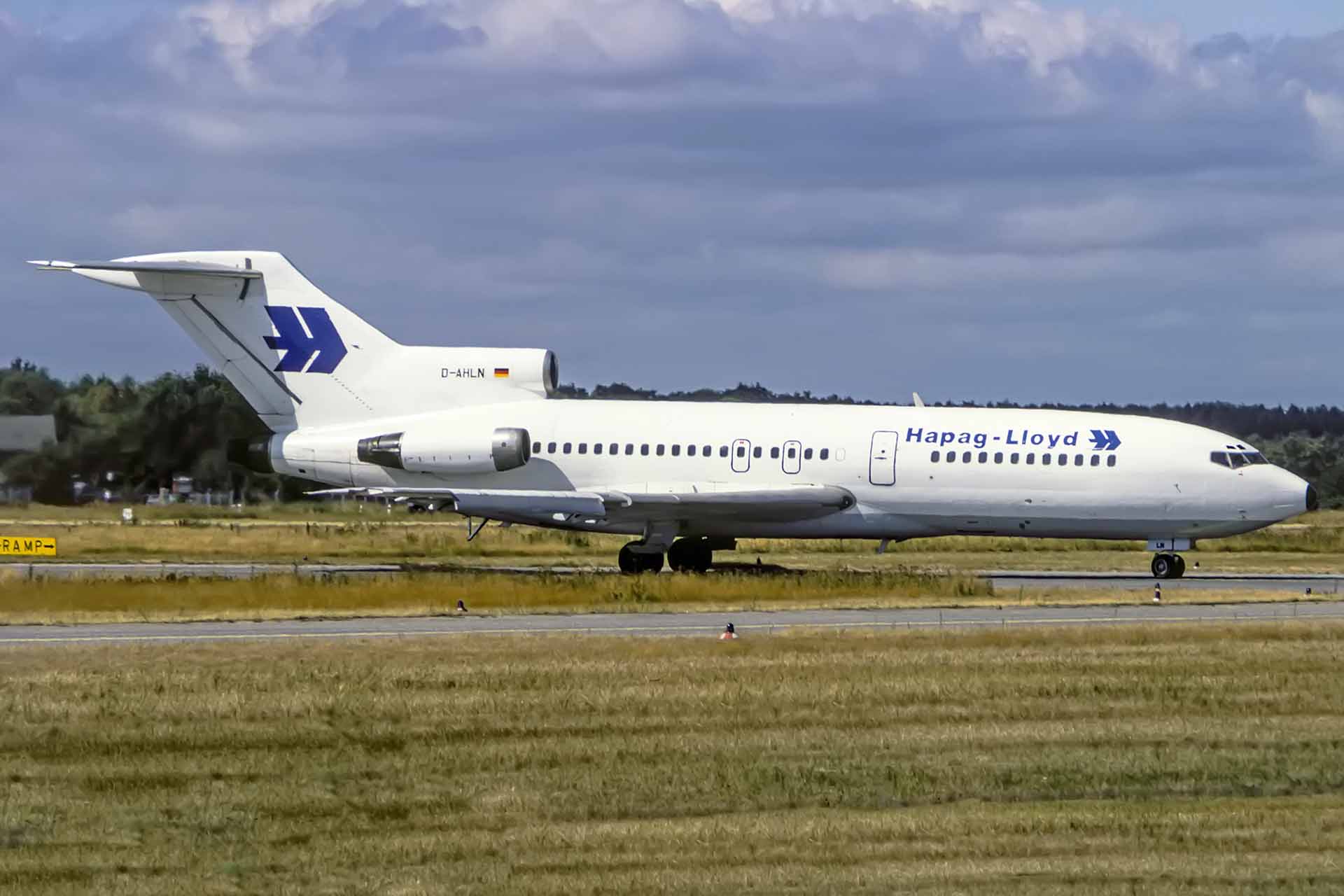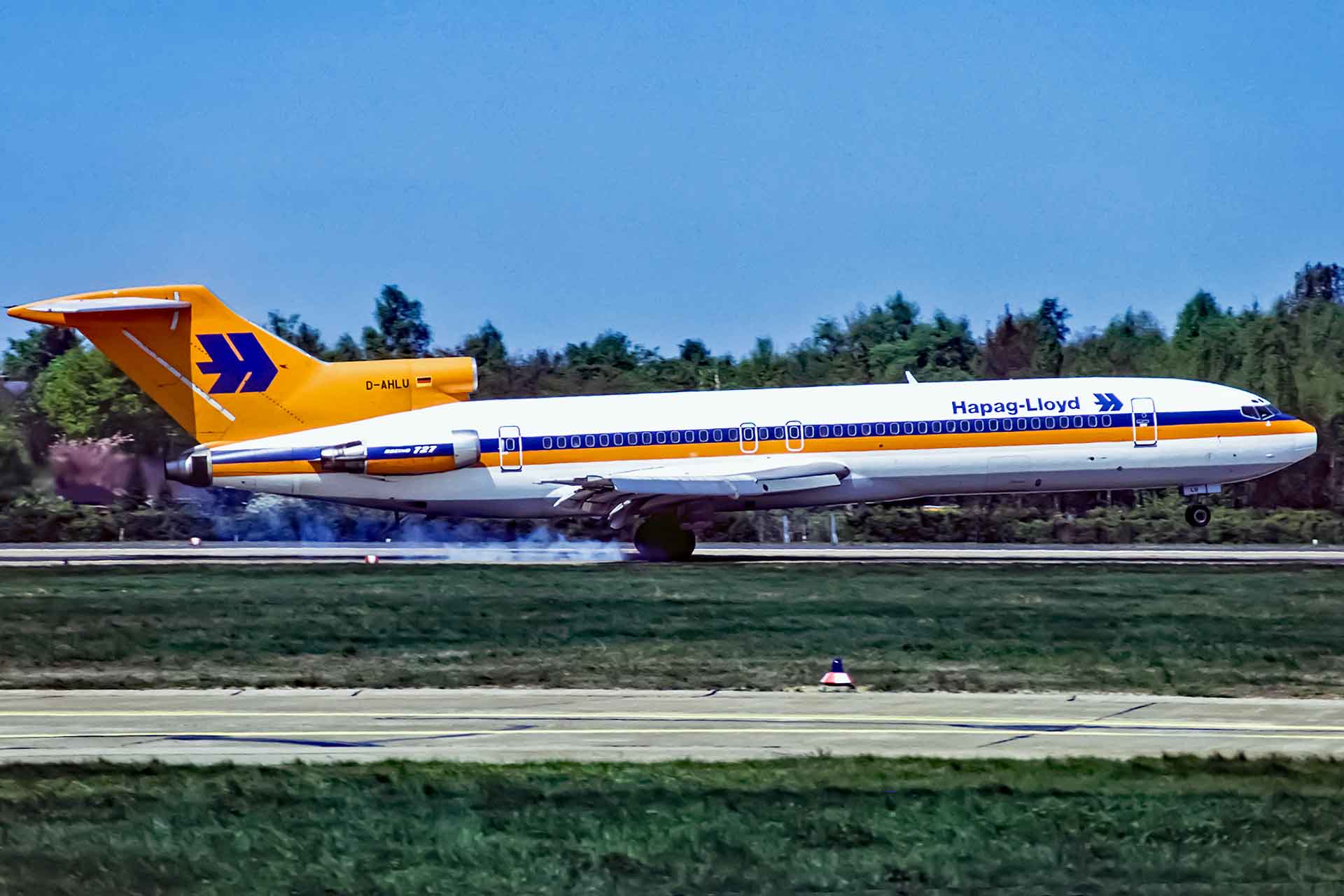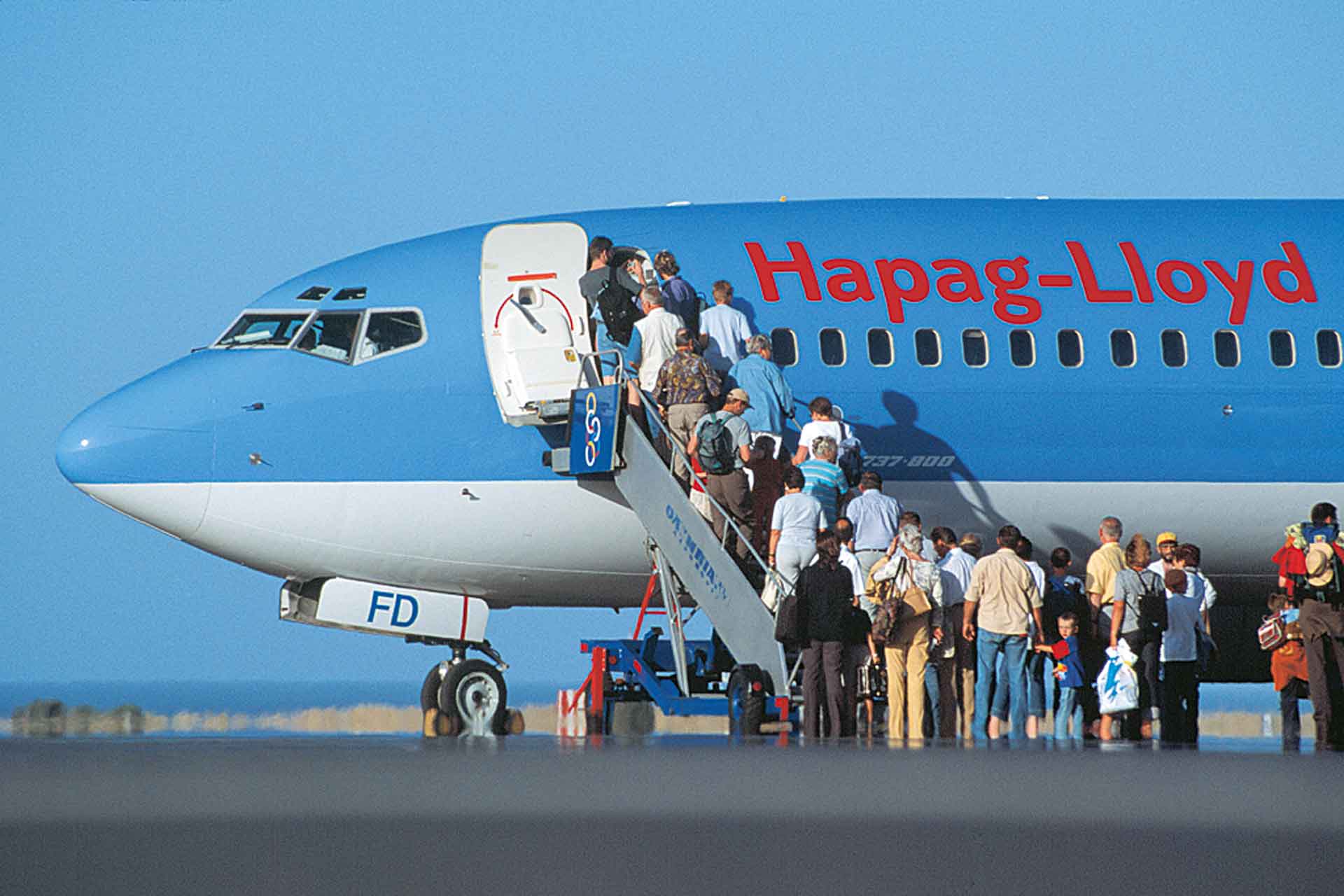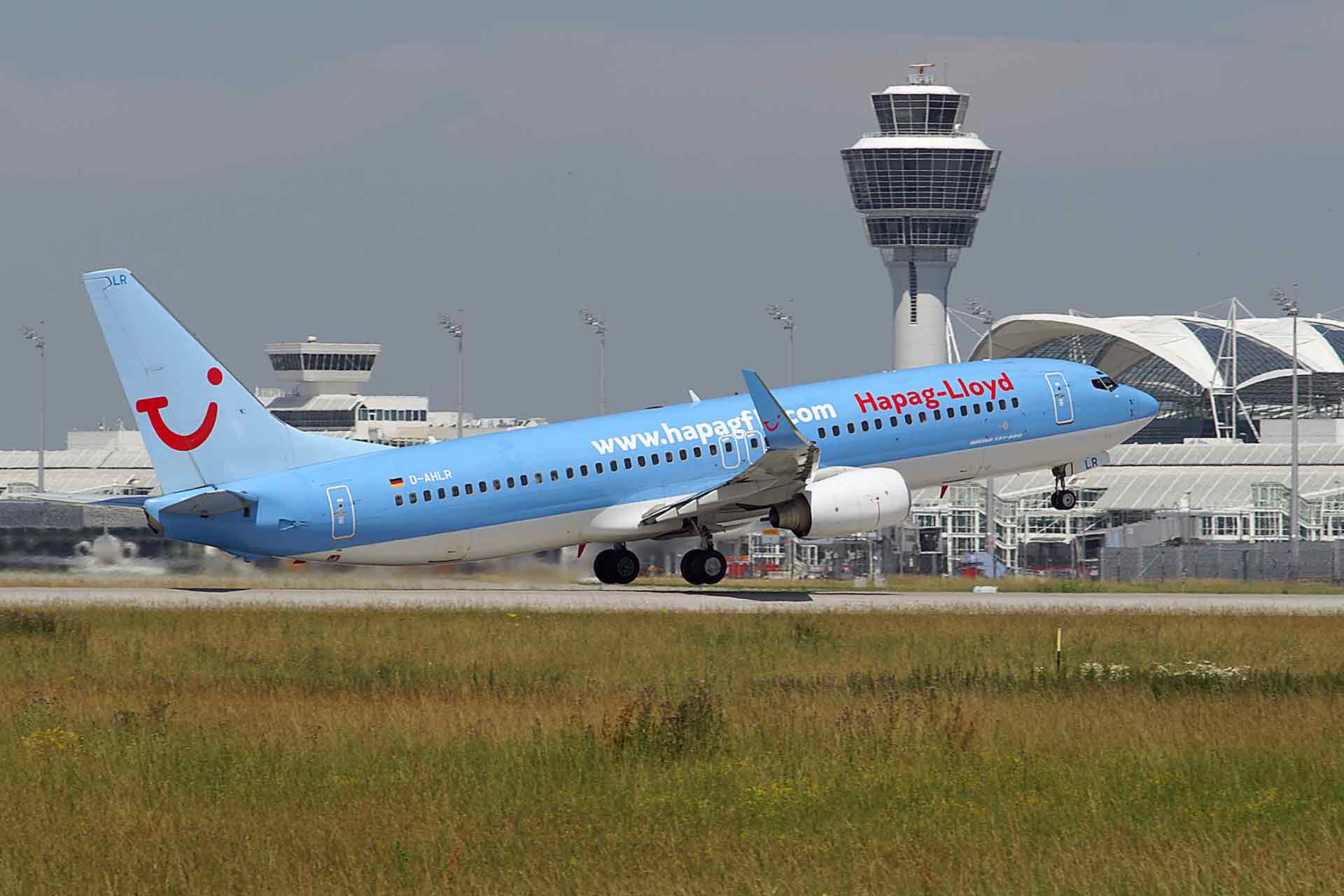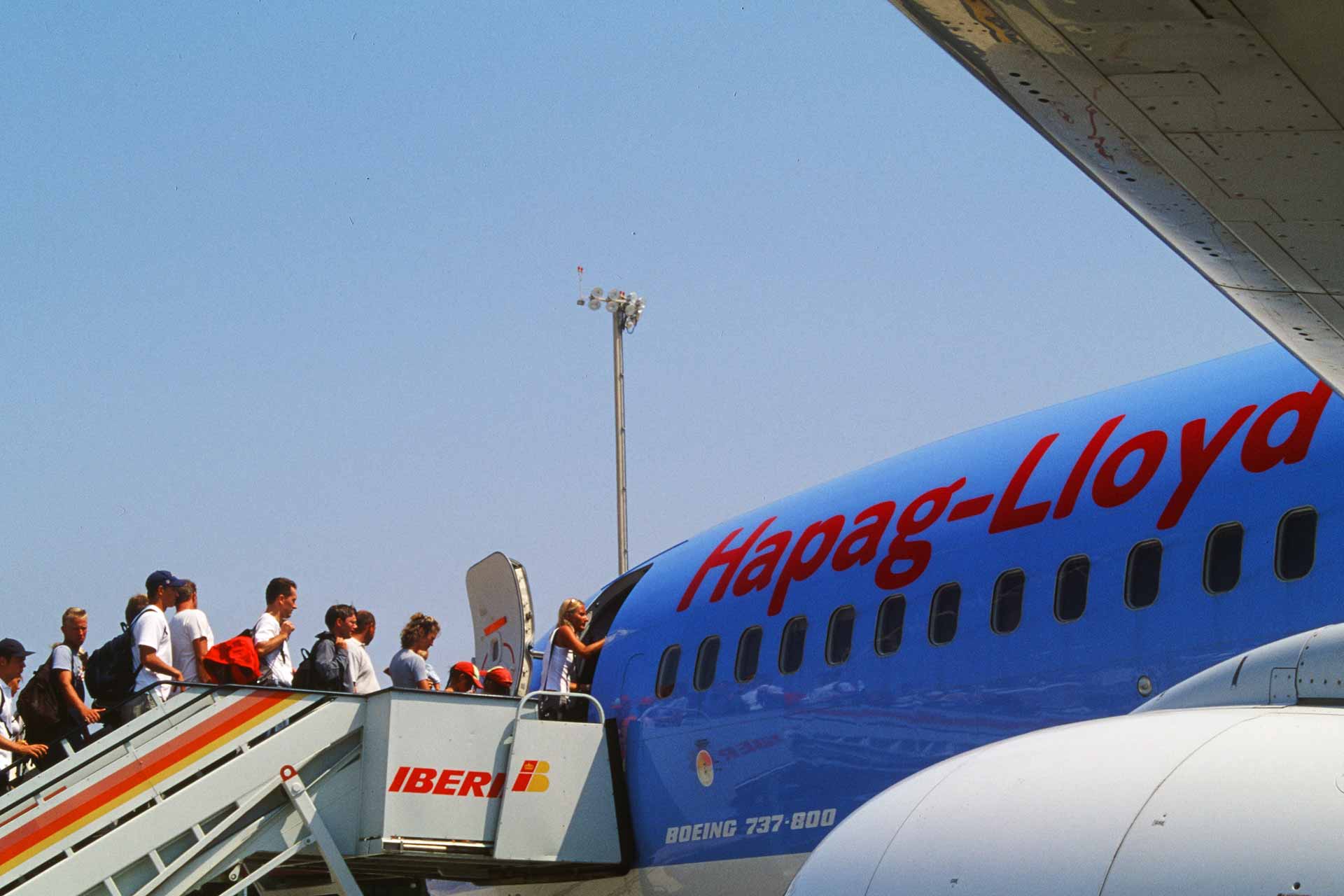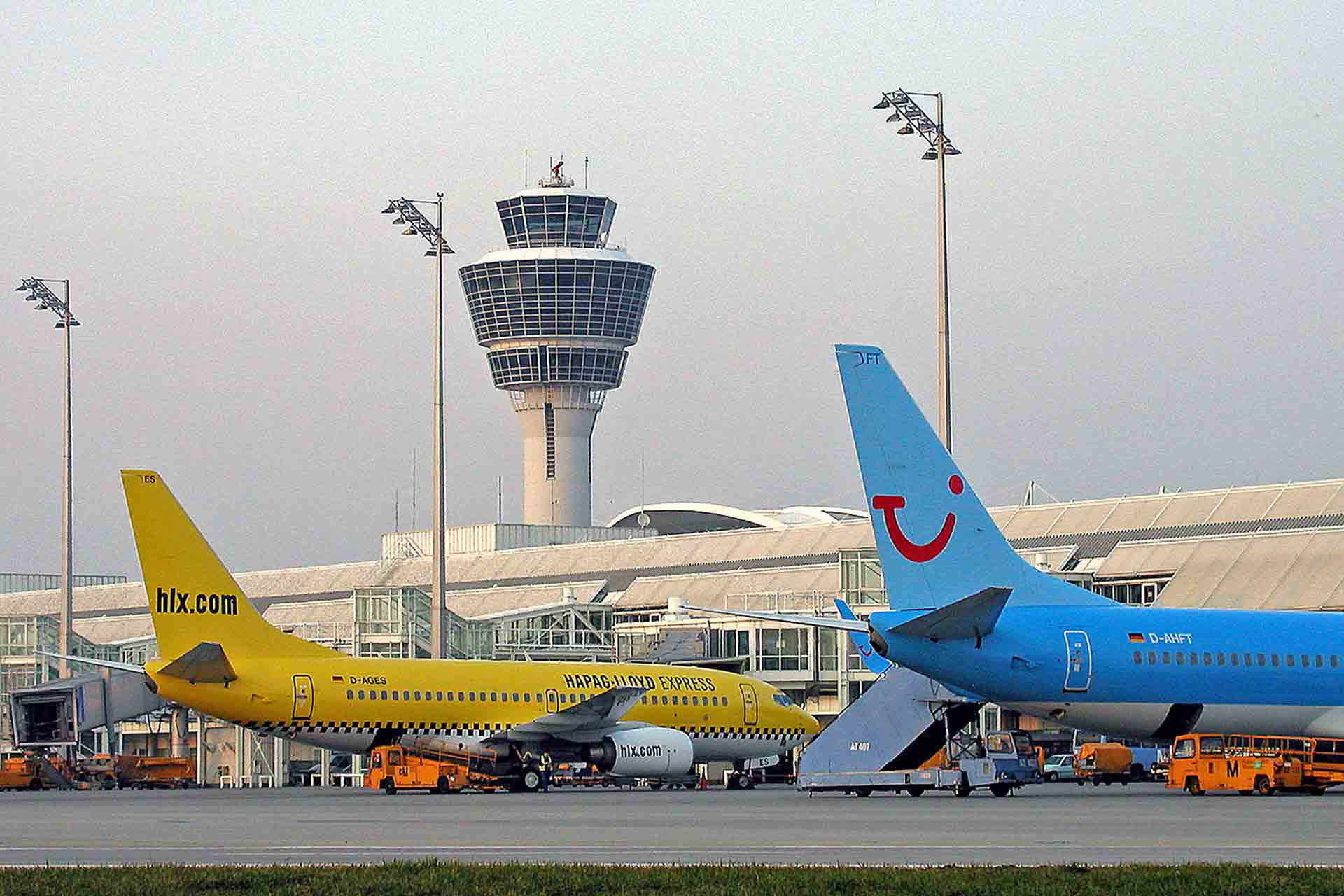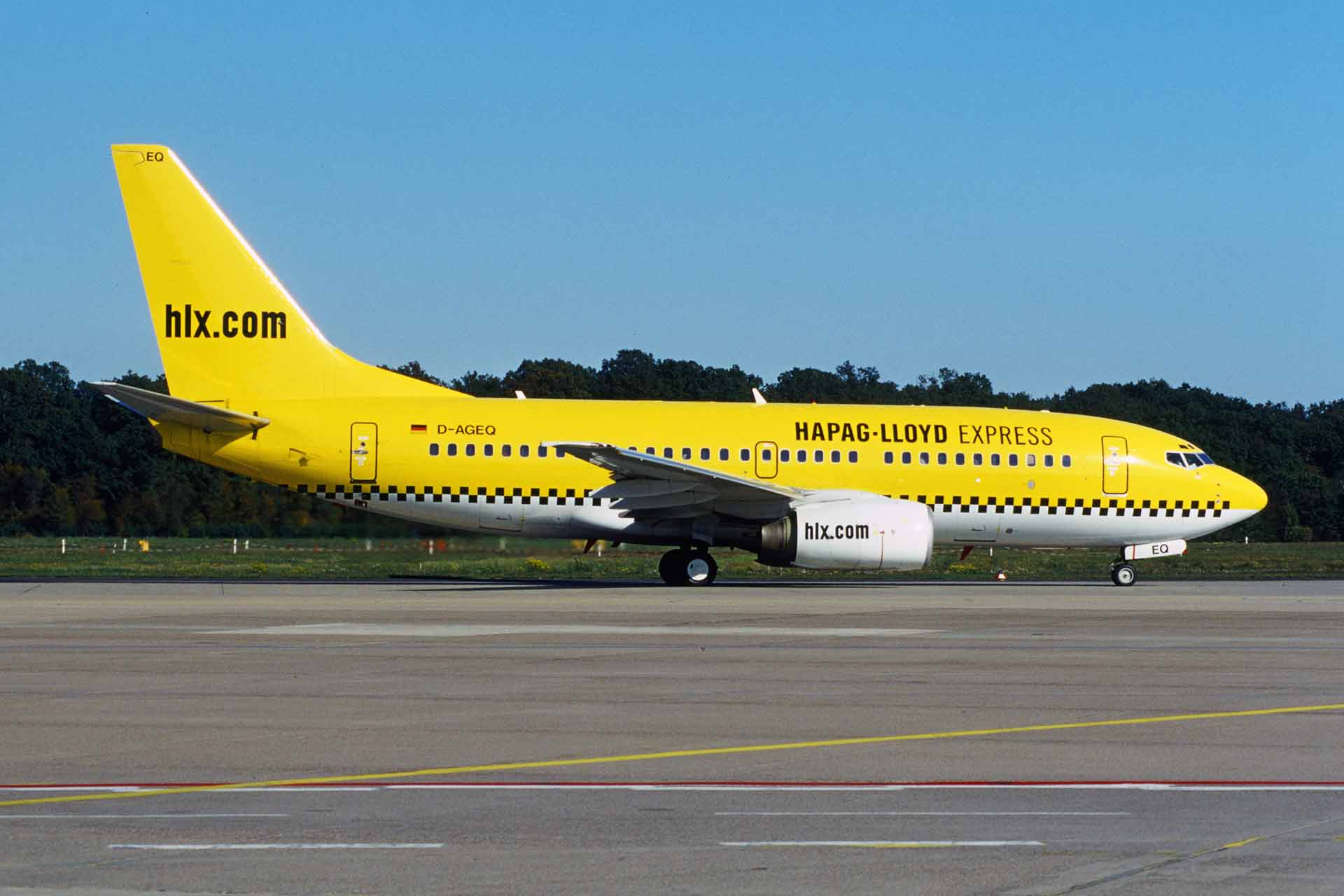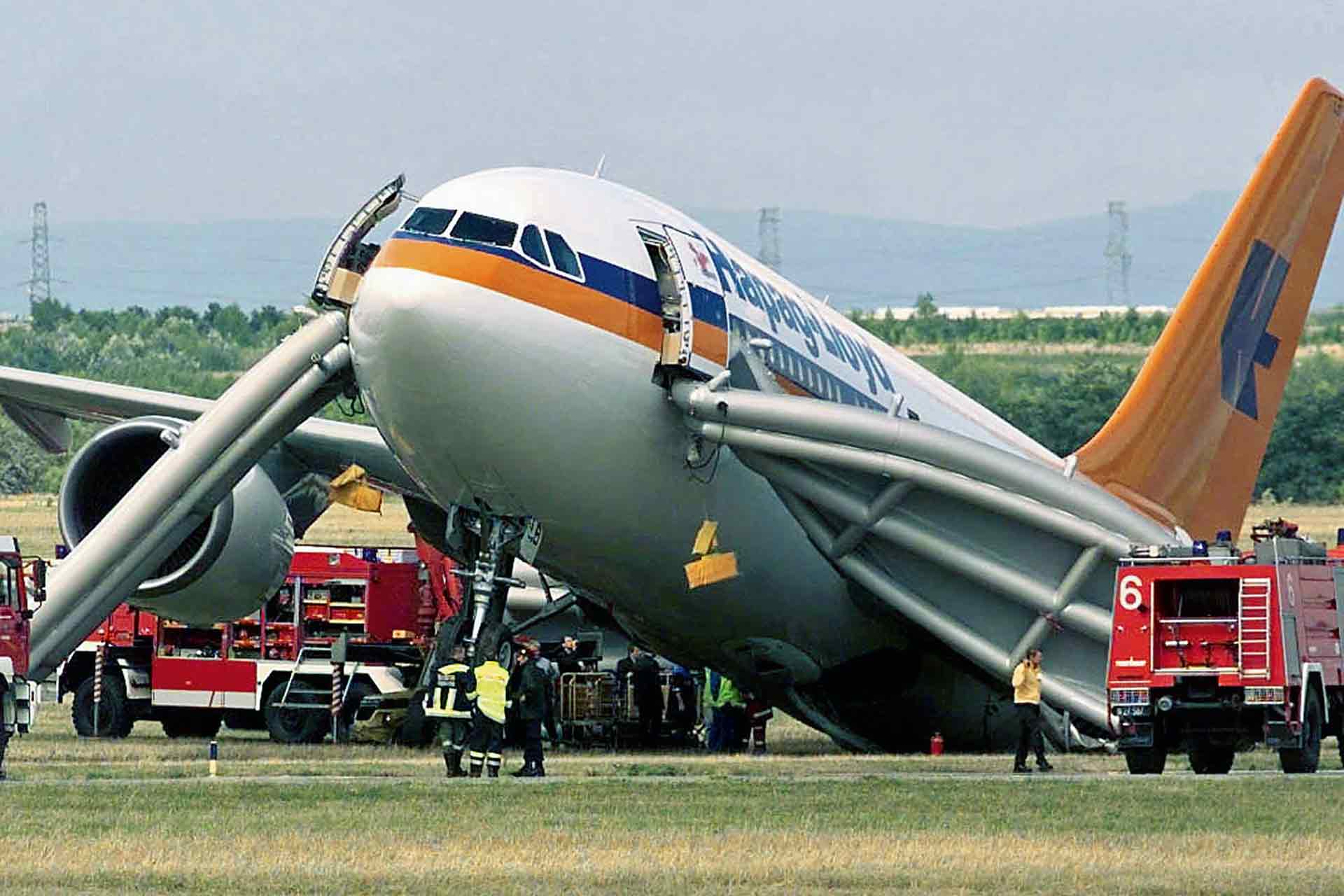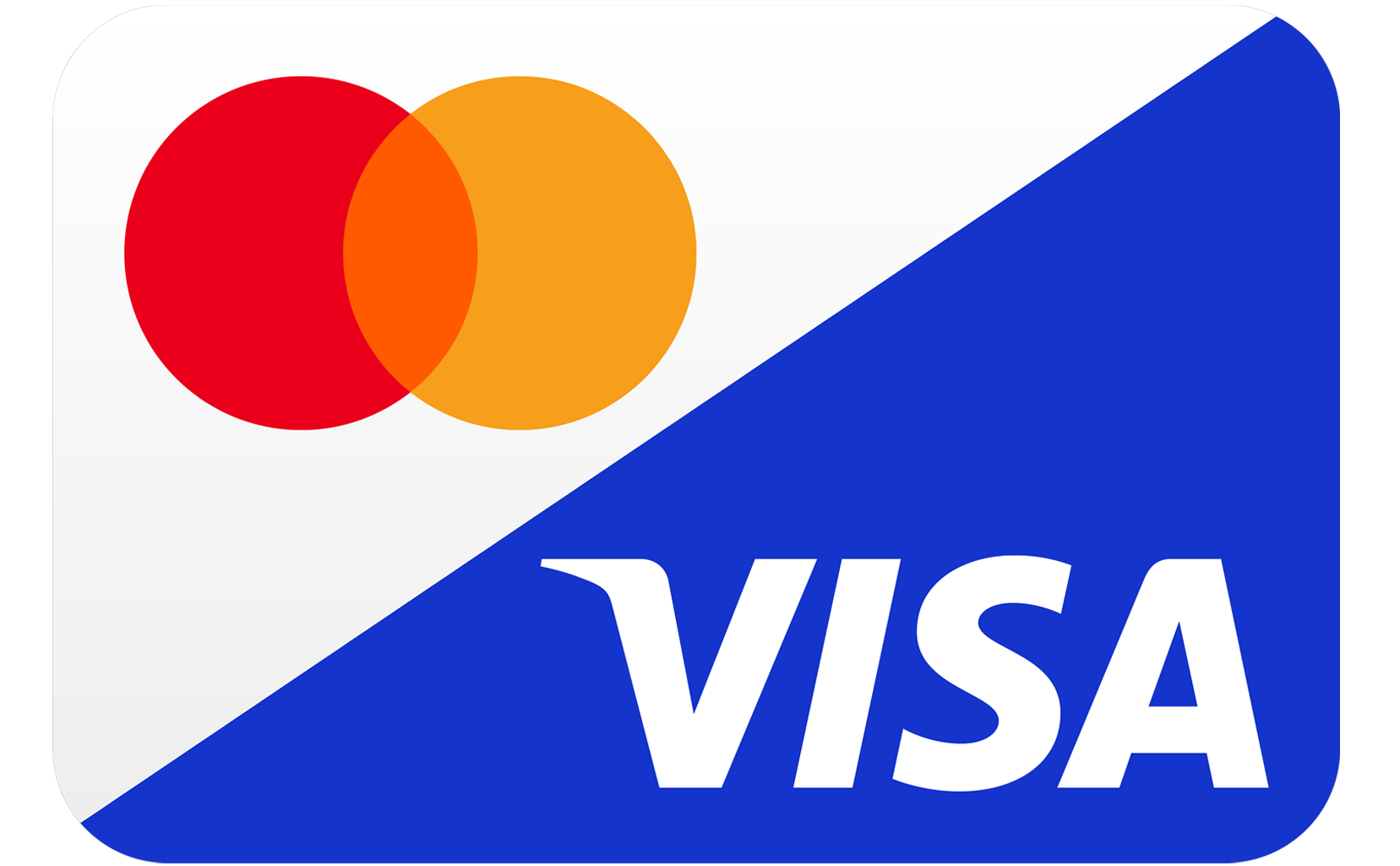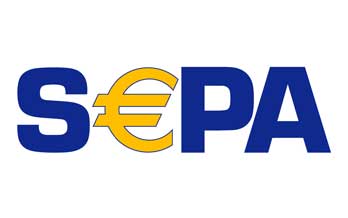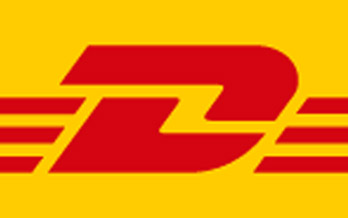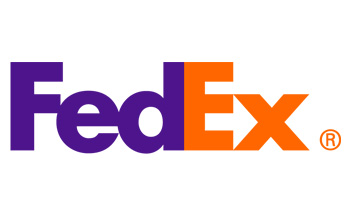From cargo giants to a holiday flyer
50 years ago, Bremen-based shipping giant Hapag-Lloyd reconnected with its 1920s flying tradition, and entered holiday flying. On March 30, 1973, a Boeing 727 in bright orange livery first took off with the new Hapag-Lloyd branding, which remained a classic in German air tourism until 2007.
A310-304 D-AHLA was delivered new to Hapag-Lloyd in 1989 and operated there until 2006, seen here landing at Arrecife. Photo: Andreas Spaeth
The two major German shipping companies Hamburg-Amerika Linie (Hapag) and Norddeutscher Lloyd had a common heritage even before both merged to become Hapag-Lloyd in 1970. Already back in 1910, Hapag had taken over advertising and handling for Deutsche Luftschiffahrts AG, operating all Zeppelin airship flights. In contrast, in 1920, Norddeutsche Lloyd established its air arm Lloyd-Luftdienst. When ten years after World War II, the newly founded Federal Republic of Germany was granted operating its own air traffic again, both shipping companies were, once more, part of the business. They took over smaller shares of newly founded Lufthansa and its charter subsidiary Deutsche Flugdienst (predecessor of Condor); they didn’t remain in the shareholder role for too long, however. But it wasn’t a big surprise then when Hapag-Lloyd turned towards flying again in the early 1970s, preparing to launch a holidaymaker carrier in Northern Germany.
This Boeing 737-200 was among the first of this type in the Hapag-Lloyd fleet in 1981, seen here 1988 in Hamburg. Photo: Ralf Kokoschka
A shipping company takes to the air
In July 1972, Hapag-Lloyd Fluggesellschaft (IATA code HF) was founded, headquartered in Bremen with operations based in Hanover. The deal to buy three Boeing 727-100s from Japanese carrier All Nippon Airlines (ANA) was a bargain for aircraft being only seven to eight years old then. The company colors of new Hapag-Lloyd Flug in bright orange on the tail and the cheatline below the windows was officially called “cognac color”, sort of mirroring the happy holiday spirit a beach-bound carrier wants to project. On March 30, 1973, the Boeing 727-100 registered D-AHLM took off from Hamburg on its first flight HF203 to Ibiza.
A300 D-AMAX is a very early specimen carrying the MSN 012, it flew with Hapag-Lloyd from 1979. Photo: Ralf Kokoschka
First boom, then almost bust
Business went well: until early 1976, already eight Boeing 727-100s were plying the network, six bought from Japan, one from the USA and another operated by Sabena before. Already by late 1975, the one-millionth passenger in the short company history was celebrated, between 1976 (525,000 passengers) and 1977 (1.7 million), passenger volume had tripled. But fortunes were limited, it soon showed. While 1979 was another record year with two million passengers carried, dark clouds of difficult circumstances started to gather, threatening survival. The oil price explosion at the end of the 1970s had brought skyrocketing costs for flight operations: between 1973 and 1980, kerosene prices for the Frankfurt–Palma trunk route had risen by over 500 percent. And that while yields declined due to overcapacity, rendering finding remedy in rising fares obsolete. Additionally burdening was a sharp decline in business to Spain, Hapag-Lloyd Flug’s major destination by far.
The A300 registered D-AHLB was a one-off C4 type, as it got its main deck cargo door fitted on the left side in 1979. Photo: Dirk Grothe
Bavaria Germanair merger complicates things
Major problems were created by the 1979 takeover of Bavaria Germanair from Munich-based housing tycoon Josef Schörghuber, another holidaymaker airline based both in Munich and Frankfurt. This meant the fleet became inhomogeneous when it increased from just eight Boeing 727-100s before to 17 aircraft, seven fuel-guzzling elderly BAC 1-11s were added as well as two new Airbus A300B4s as first widebodies. After cost cutting and fleet reduction, modernization of the fleet began in the early 1980s. In May 1981, the first of six new Boeing 737-200s arrived to replace the old Boeing 727-100s and mostly the infernally noisy BAC 1-11s. For trunk routes with big demand, the fleet of A300B4 widebodies was increased to eight aircraft by 1988. Early that year, another round of fleet renewal began, which saw 14 existing aircraft being replaced by 16 new ones: Four Airbus A310s and six each of the bigger Boeing 737-400s and the smaller 737-500 version, intended to serve smaller German airports. Between 1989 and 2001, Hapag-Lloyd sustained long-haul operations to the Caribbean despite heavy, continuous losses.
This Boeing 727-100 had flown in Japan earlier, then, from 1973, at Hapag-Lloyd. This photo shows a hybrid livery after the aircraft was leased to Africa in 1983. Photo: Dirk Grothe
Launch customer for the Boeing 737-800
In 1994, Hapag-Lloyd became launch customer of the Boeing 737-800, ordering 16 of them, which later became one of Boeing’s most successful models ever. Hapag-Lloyd even followed on ordering further aircraft of the type, and from March 2001, the first 800s were delivered from Boeing with the new upward bent wingtips. These so-called winglets, meant to save fuel, had its world premiere with Hapag-Lloyd. In the year 2000, the airline carried more than six million passengers. The peak came in 2007, when a one-time record of twelve million customers was achieved, almost 60 times the amount of the first year 1973.
In 1979, this Boeing 727-200 was delivered new to Hapag-Lloyd, where it operated until 1984. Photo: Dirk Grothe
The name Hapag-Lloyd disappears under the TUI main brand
Early in the new millennium, TUI was advancing its consolidation as an integrated tourism group. As a result, initially the well-established orange and blue livery of Hapag-Lloyd Flug with the stylized blue arrow logo disappeared. In the intense competitive landscape, TUI deemed its bright look in light blue as a lead color with the TUI smiley at the tail as being more effective. The name Hapag-Lloyd, now in red typeface, initially stayed on, while by 2002, it was replaced by the new name Hapagfly on the fuselage. From 2007, all TUI airlines appeared solely under the new lead brand, relegating the heritage-rich Hapag-Lloyd Flug to being a thing of the past after almost 35 years. Externally, the whole flight arm of the tourism group now only appears as TUIfly.
At the turn of the millennium, the traditional Hapag-Lloyd colors were replaced by TUI’s signature light blue. Photos: TUIfly, Munich Airport, Andreas Spaeth
HLX – the yellow taxi airline
On December 3, 2002, TUI group launched its new in-house low-cost airline Hapag-Lloyd Express (HLX) with its hub in Cologne/Bonn, which didn’t even belong to the holiday carrier, but rather was met with resistance there. Crucial elements of the launch were positioning and branding: “Flying for the price of a taxi” was the claim, HLX aircraft sported a yellow livery with black checkerboard patterns on the lower part, resembling a New York taxi. During its four years as a separate brand, HLX served about 40 destinations in ten European countries. During this time, a total of 19 different aircraft in HLX branding were operated, among them 17 Boeing 737s of the -400, -500, -700 and -800 versions, as well as two Fokker 100s operated by Germania. On January 15, 2007, HLX was merged with Hapagfly under the new company airline brand of TUIfly, and besides the blue holidaymaker carrier, also the yellow taxi-like low-cost airline brand disappeared.
TUI’s low-cost airline HLX with its distinct checker cab livery only operated from 2002 to 2006, and was not affiliated with Hapag-Lloyd Flug. Photos: Munich Airport and Andreas Spaeth
On July 12, 2000, a Hapag-Lloyd A310 has to make an emergency landing in Vienna. After a gear problem, fuel ran out. All on board survive, the aircraft is a write-off. Photo: TUIfly archive
Text: Andreas Spaeth
Cover photo: Konstantin von Wedelstädt
Unforgettable
More about Hapag-Lloyd, HLX, and others in the book (in German) by Andreas Spaeth: „Unvergessen – legendäre deutsche Airlines“

